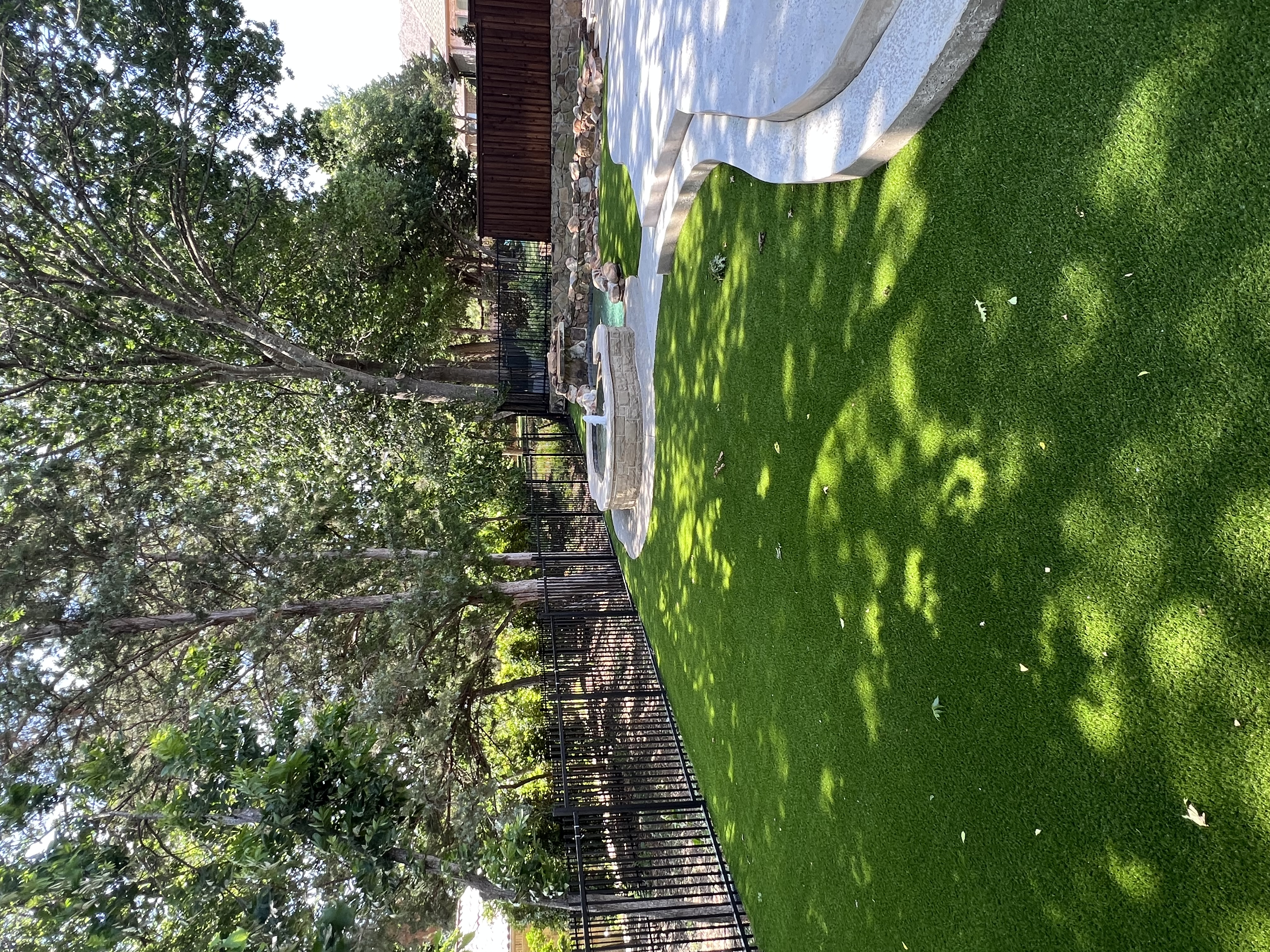972-764-8959
FREE ESTIMATES

blog
CONTACT
TURF TIMES

Going Green with Artificial Turf: A Sustainable Choice for Your Community
Introduction:
In the quest for sustainable landscaping solutions that offer both aesthetic appeal and environmental benefits, artificial turf is emerging as a standout choice. Beyond its year-round lush appearance and low maintenance perks, artificial turf presents a compelling advantage in an area crucial for urban and suburban environments alike: superior drainage capabilities. Let's dive into why artificial turf drains better than natural grass and explore the positive impacts this can have on your community.

The Drainage Dilemma: Artificial Turf vs. Natural Grass
At the heart of the matter, the way water moves through artificial turf versus natural grass is fundamentally different. Natural grass, while beautiful and beneficial in its own right, can sometimes struggle with efficient drainage. This is due to several factors, including soil compaction, the natural variability of soil types, and the grass's root system's water absorption rate. In contrast, artificial turf is designed with a built-in drainage system that allows water to pass through quickly and efficiently, reducing runoff and minimizing the risk of flooding.
Why Artificial Turf Offers Superior Drainage
1. Engineered for Efficiency: Artificial turf is constructed with permeability in mind. The backing material is typically made from a porous fabric or a perforated layer, which allows water to drain through rapidly, preventing the accumulation of surface water.
2. Consistent Performance Across All Soil Types: Unlike natural grass, which can be affected by the underlying soil's drainage efficiency, artificial turf performs consistently well regardless of what lies beneath. This uniform performance makes it a reliable option for landscaping in areas prone to waterlogging.
3. Reduced Runoff: By facilitating faster water absorption into the ground, artificial turf plays a crucial role in reducing runoff. This is particularly important in urban settings, where impermeable surfaces like concrete and asphalt can lead to increased runoff, straining stormwater systems and contributing to pollution in rivers and lakes.
Community Benefits: Embracing Artificial Turf
1. Mitigating Flood Risks: Communities that adopt artificial turf for public spaces, sports fields, and residential areas can significantly reduce the risk of flooding. This enhanced drainage capacity ensures that even during heavy rainfall, water is efficiently absorbed and directed away from buildings and infrastructure.
2. Conserving Water Resources: In regions where water scarcity is a concern, artificial turf offers an environmentally responsible alternative to natural grass. By eliminating the need for regular watering, communities can conserve precious water resources while maintaining green, inviting landscapes.
3. Supporting Biodiversity: While it may seem counterintuitive, replacing certain areas of natural grass with artificial turf can contribute to biodiversity conservation efforts. By reducing the demand for water, pesticides, and fertilizers, artificial turf can help lower the ecological footprint of landscaping, leaving more natural habitats undisturbed and reducing chemical runoff into local ecosystems.
4. Enhancing Recreational Spaces: For community sports fields and parks, artificial turf provides a durable, all-weather surface that ensures facilities remain accessible and safe year-round. This encourages outdoor activity and social interaction within the community, promoting a healthy, active lifestyle.
The Sustainable Choice for a Greener Tomorrow
The shift towards artificial turf is more than just a landscaping trend; it's a forward-thinking approach to creating sustainable, resilient communities. By offering superior drainage, conserving water, and reducing maintenance demands, artificial turf aligns with broader environmental goals and community well-being.
Whether you're a city planner, a homeowner's association member, or a resident invested in the future of your community, considering artificial turf is a step toward a more sustainable, flood-resistant, and vibrant communal space. As we look to the future, embracing innovative solutions like artificial turf can help us build greener, more sustainable communities that thrive in harmony with their natural surroundings.

